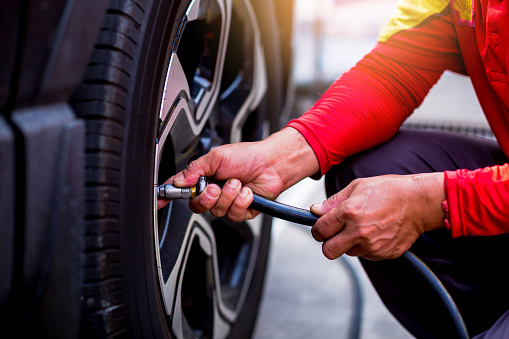Replacing tires is expensive and the better you take care of them, the longer they will last. Still, tires do have a life expectancy but what that actual life span is, seems to be up for debate. Some seem to think that six years is the magic number even if they haven’t actually been used. When tires sit on a shelf or have been in storage for six years they still age and deteriorate. The Rubber Manufacturer Association says it isn’t as simple as that. Until the experts agree it is up to us in the automotive service and repair industry to keep a good eye on our customers’ tires.
Most consumers may not be aware that the date of manufacture is on the tire sidewall. For example, in a recessed area on a tire, a code such as 8PY0816 stamped on it, the 0816 means it was manufactured in 2016 and in the eighth week of that year. When you do purchase new tires check the date. Some tires sit around for years before being sold as “new” and you don’t want to purchase aging tires! You want to purchase new tires! That is what you are paying for.
Reasons To Be Proactive
It has been determined that over 6,000 accidents a year are caused by tire problems. Under inflation is a major cause, however tire monitoring systems have helped with this issue. Tires should be inspected every 3 to 4 months for inflation, wear, balance, alignment and rotation.
Tires do come with wear bars or flat spots between the tread grooves. When the tread wears to the point it is equal to the flat spots the tire needs to be replaced. When you look at the rubber tire and see cords showing through, or bulges, deep cracks or tread starting to separate, you have a very unsafe tire and should not drive on it.
Tire Inflation
Tips for tire inflation: some consumers think the tire pressure listed on the tire sidewall is the proper pressure. That is not always the case. The tire pressure listed on the tire is the maximum pressure the tire can hold. The recommended tire inflation pressure can be found in your owner’s manual, or on the vehicle’s door jamb sticker. Keeping your tires at the recommended inflation can save you nine cents per gallon of gas and prevent premature wear.
And when you are thinking about tires, don’t forget the spare! The tire monitor light will light on the dash if the spare is low on air for some models. Hopefully, you won’t have to use it, but it is nice to know it is ready just in case!
Certified Auto Specialists: the friendlier and more helpful auto shop! Feel free to call 626-963-0814 with any questions, and we will be glad to help, or visit our website at CertifiedAutoCa.com

